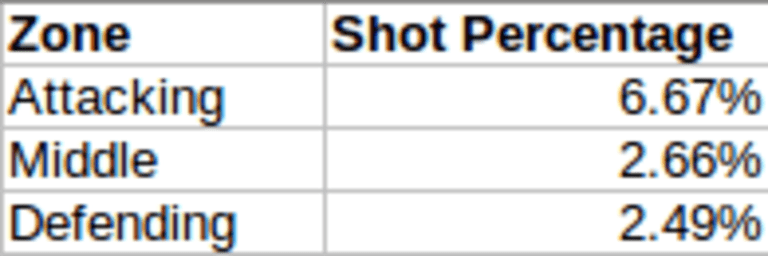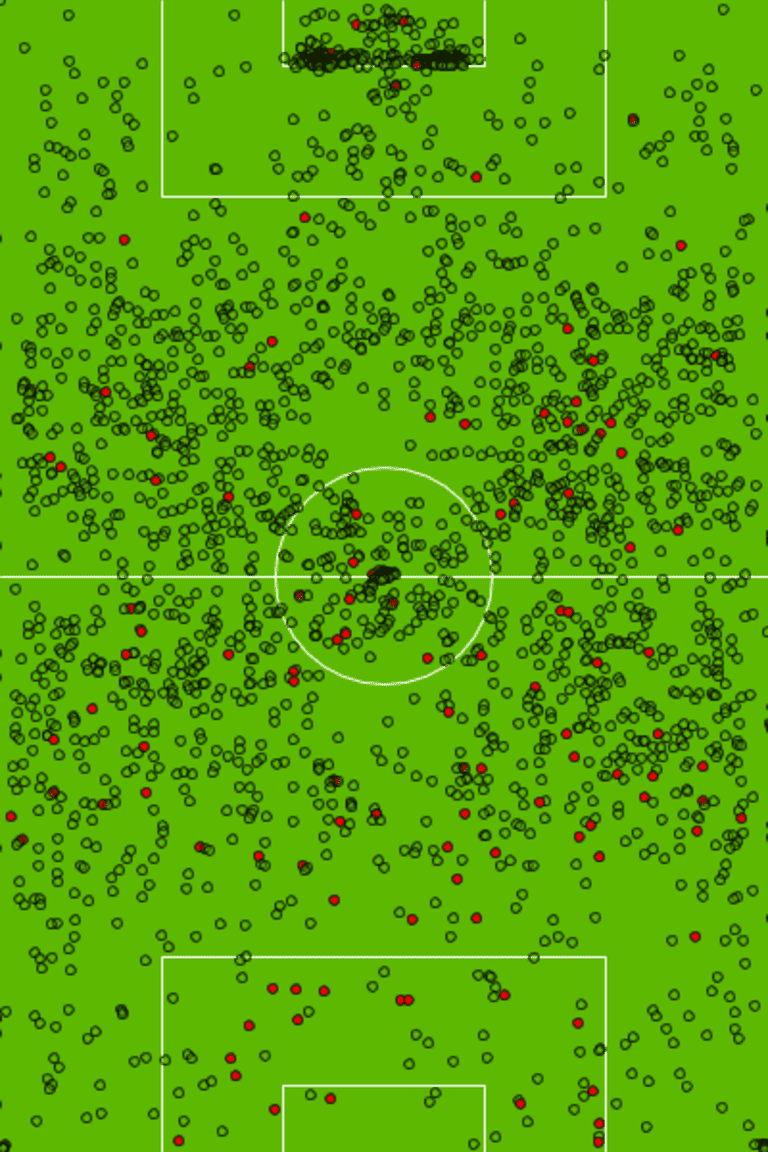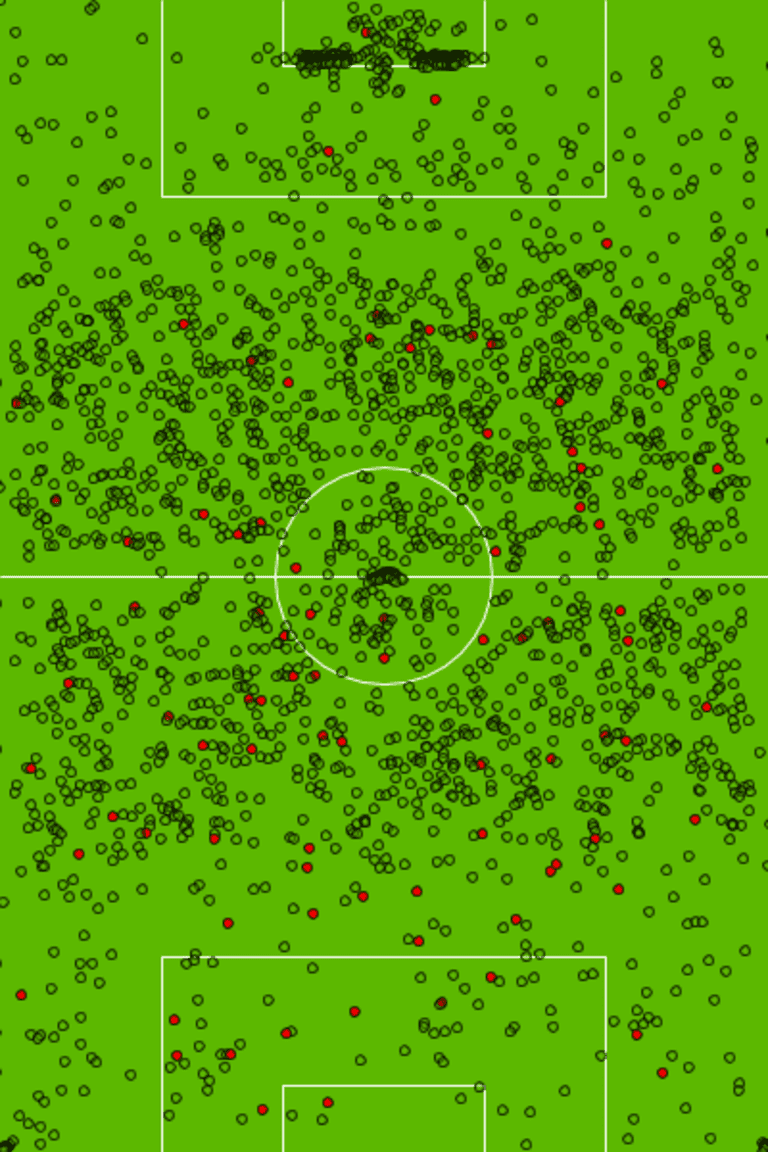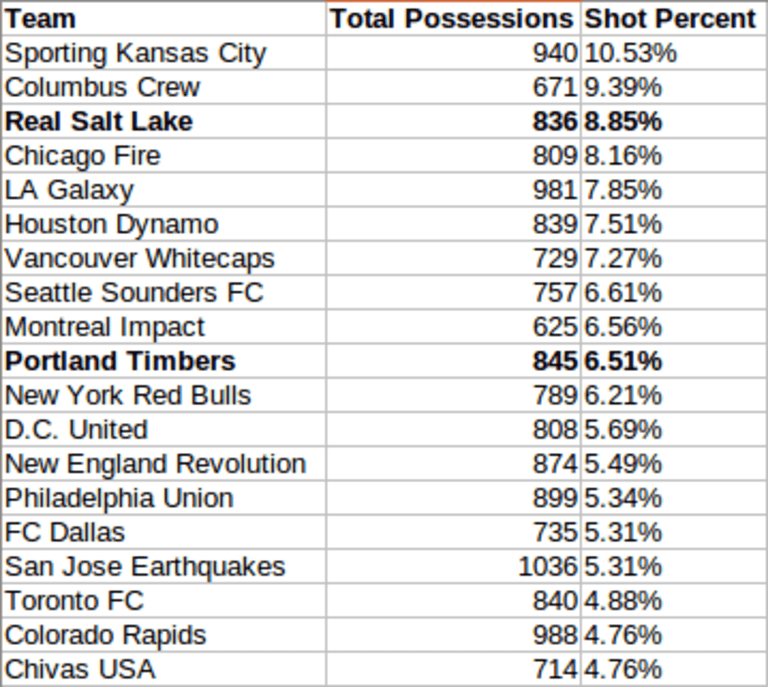When Portland visit Rio Tinto Stadium for their US Open Cup semifinal against Real Salt Lake on Wednesday night, we will get 90 minutes (perhaps more) of action between two MLS squads who happen to be displaying some of the best tactical nous in the country.
Will the versatile, freewheeling Timbers punch Caleb Porter's ticket to the Open Cup final? Or will the metronome passing of Salt Lake's midfield engine slowly lull Portland into submission? It remains to be seen.
To get an idea of just how differently these two teams attack, take a look at these two passing charts below. These passing charts depict 100 randomly selected passes from inside the highlighted attacking zone in blue. To help control for game context, the selection is limited to completed passes during the first half while the game is tied. (And as with all Central Winger visualizations and Ender's Game battle rooms, the enemy's gate is down.)
Real Salt Lake:

Portland Timbers:

Known for their indirect style of play, RSL are much more likely to spray the ball backwards and wide. Portland, on the other hand, are significantly more direct having played many more balls into the attacking third through channels to the wing.
But when it comes to scoring goals, some principals are the same no matter the attacking style. In MLS, like every other premier soccer league, the name of the game is winning the ball in dangerous areas and taking advantage of your opportunities. On average, possessions that begin in the attacking third of the pitch are two to three times more likely to result in an unblocked attempt at goal than possessions beginning in the middle or the defensive third.

To help illustrate this, here are the starting positions of every 2013 possession for Salt Lake and Portland that included at least one completed pass. Marks in red indicate that the possession concluded with a non-blocked attempt at goal. While the red dots are equally distributed across the field, the total volume of possessions are not. Simply put, possessions that start closer to the goal are more likely to be marked red.
Real Salt Lake:

Portland Timbers:

Looking at the possession maps of Salt Lake and Portland, it's actually very difficult to tell them apart. Other than RSL being slightly more likely to win the ball along the wing, and Portland being more likely to earn possession in the middle of the pitch, there is not much of a difference. There is no significant difference in terms of where either team starts possession. In fact, the distribution across zones and teams is amazingly similar.

So, where can we find a difference? Conversion rates. When winning the ball in the attacking third, Salt Lake have been one of the most efficient teams in the league in terms of generating a non-blocked shot at goal thus far in 2013. The Timbers have been surprisingly average.
Given Portland's defensive stability (second-fewest goals conceded in MLS) and Real Salt Lake's ruthless efficiency when earning possession in the attacking third, expect a high-stakes game of cat-and-mouse to unfold in Portland's defensive midfield on Wednesday night.














